Topic: Nature and Botanicals
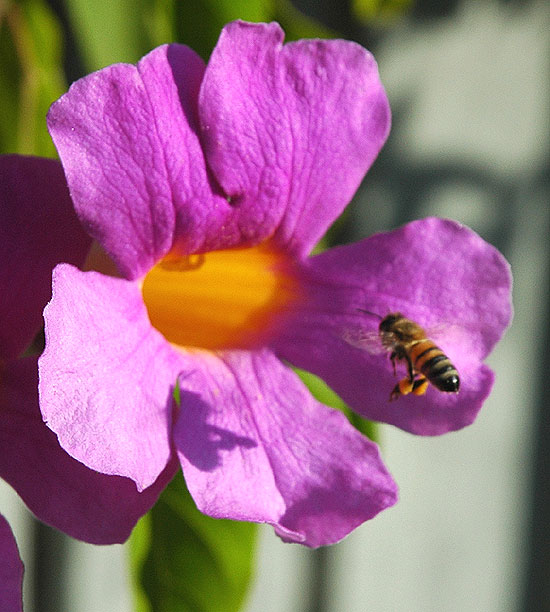
| « | July 2025 | » | ||||
| S | M | T | W | T | F | S |
| 1 | 2 | 3 | 4 | 5 | ||
| 6 | 7 | 8 | 9 | 10 | 11 | 12 |
| 13 | 14 | 15 | 16 | 17 | 18 | 19 |
| 20 | 21 | 22 | 23 | 24 | 25 | 26 |
| 27 | 28 | 29 | 30 | 31 | ||


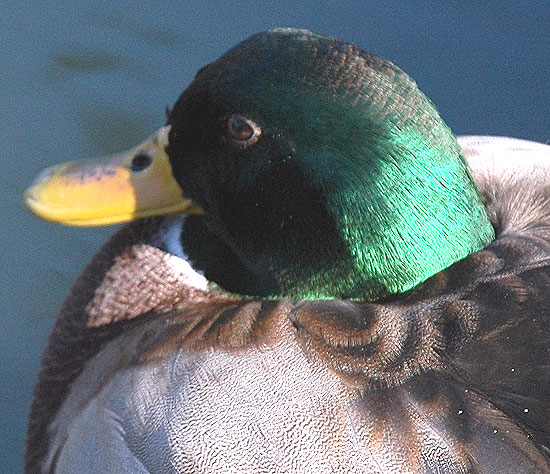
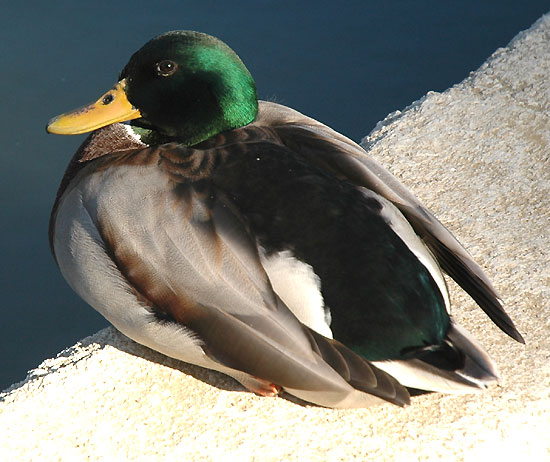

Above the duck, this would be a basic ordinary Beverly Hills palm tree, and in the foreground what is called pink floss silk tree, Chorisia speciosa. They're blooming all over town now, as they do between August and November. This year the less common white-flowered cousin, Chorisia insignis is also in bloom at the same time, which is unusual. The two trees usually blossom in sequence but this year they flowered in tandem in late September. No one know why - global warming or something. For a full discussion see the Los Angeles Times here. The duck doesn't care.

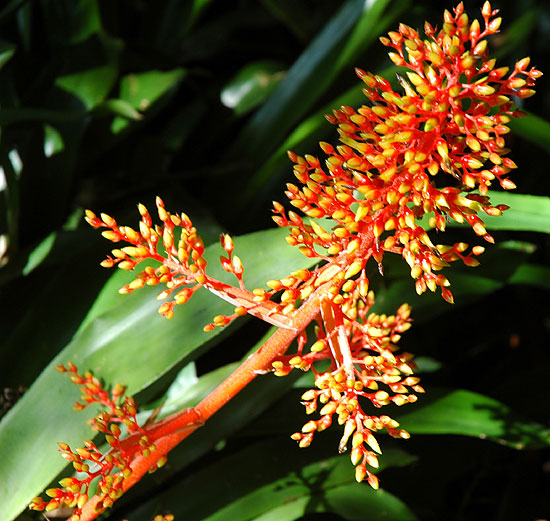
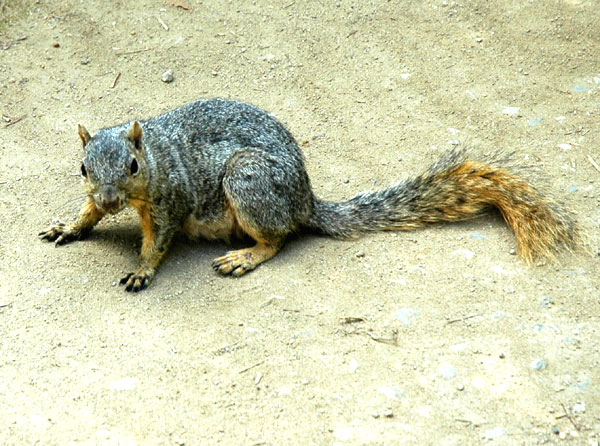
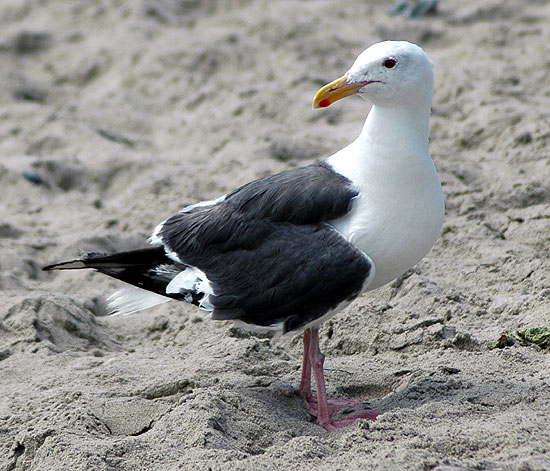
Much that is good and all that is evil has gathered itself up into the Western Gull. He is rather the handsomest of the blue-mantled Laridae, for the depth of color in the mantle, in sharp contrast with the snowy plumage of back and breast, gives him an appearance of sturdiness and quality which is not easily dispelled by subsequent knowledge of the black heart within. As a scavenger, the Western Gull is impeccable. Wielding the besom of hunger, he and his kind sweep the beaches clean and purge the water-front of all pollution. But a scavenger is not necessarily a good citizen. Call him a ghoul, rather, for the Western Gull is cruel of beak and bottomless of maw. Pity, with him, is a thing unknown; and when one of their own comrades dies, these feathered jackals fall upon him without compunction, a veritable Leichnamveranderungsgebrauchsgesellschaft. If he thus mistreats his own kind, be assured that this gull asks only two questions of any other living thing: First, 'Am I hungry?' (Answer, 'Yes.') Second, 'Can I get away with it? (Answer, 'I'll try.') - William Leon Dawson, Birds of California, 1923
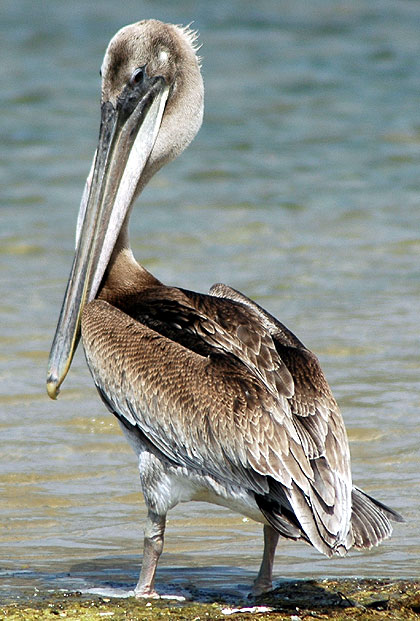 A pelican is any of several very large water birds with a distinctive pouch under the beak belonging to the bird family Pelecanidae. Along with the darters, cormorants, gannets, boobies, frigatebirds, and tropicbirds, they make up the order Pelecaniformes. Like other birds in that group, pelicans have all four toes webbed (they are totipalmate). Pelicans can be found on all continents - except Antarctica - in inland and coastal waters. You just won't find them in the polar regions, or the deep ocean way out at sea, or on oceanic islands, or anywhere in inland South America. Others that that they're there if you look.
A pelican is any of several very large water birds with a distinctive pouch under the beak belonging to the bird family Pelecanidae. Along with the darters, cormorants, gannets, boobies, frigatebirds, and tropicbirds, they make up the order Pelecaniformes. Like other birds in that group, pelicans have all four toes webbed (they are totipalmate). Pelicans can be found on all continents - except Antarctica - in inland and coastal waters. You just won't find them in the polar regions, or the deep ocean way out at sea, or on oceanic islands, or anywhere in inland South America. Others that that they're there if you look. In medieval Europe, the pelican was thought to be particularly attentive to her young, to the point of providing her own blood when no other food was available. As a result, the pelican became a symbol of the Passion of Jesus and of the Eucharist. It also became a symbol in bestiaries for self-sacrifice, and was used in heraldry ("a pelican in her piety" or "a pelican vulning (wounding) herself"). Another version of this is that the Pelican used to kill its young and then resurrect them with its blood, this being analogous to the sacrifice of Jesus.
That aside, this is a technical exercise - using the 70-300mm telephoto lens set to manual focus, and the automatic shooting mode set to sport (fast shutter speed and whatever else the D-70 does there), the idea was to keep far enough away from the birds so they weren't spooked, but to capture as much detail as possible, so you get a sense of what they're really like. Out here you usually see them from a distance, flying in a line above the surf, or plunge-diving solo for a quick bite of something herring-like. That's not good enough - you have to get up close and personal, relatively speaking.


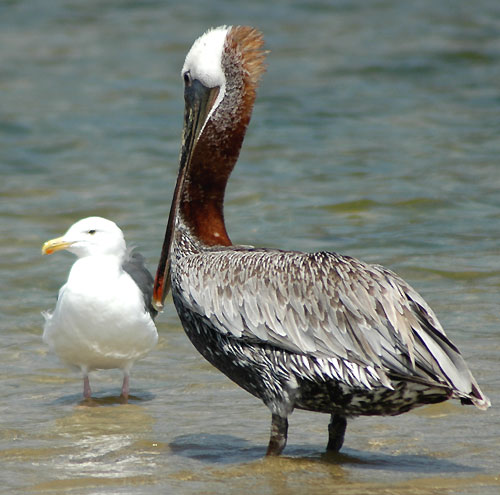
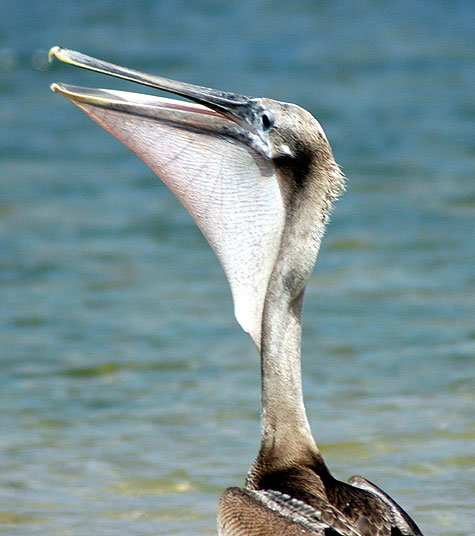
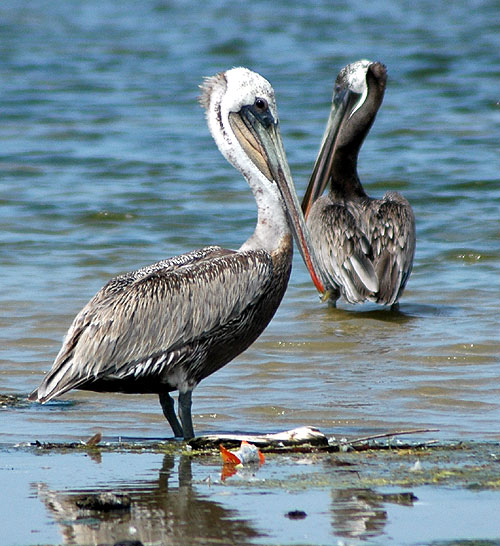
On the way home, on Lincoln Boulevard one block south of Montana in Santa Monica - Gallus gallus domesticus (domestic chicken), interpreted, and incorporated into an old Oldsmobile sedan that has seen better days. Just another bird.

Newer | Latest | Older